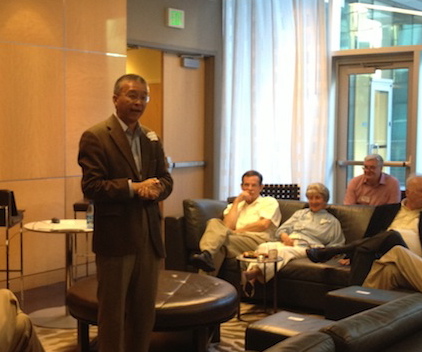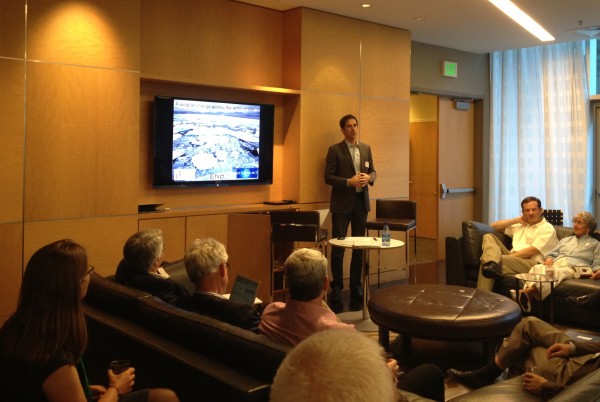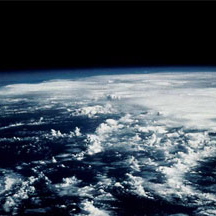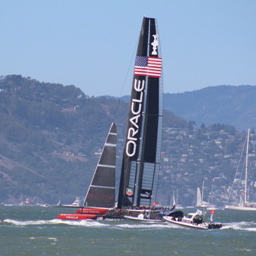Featured Stories | September 26, 2013
MIT Alumni and Faculty Meet in San Francisco to Envision the Future Ocean
By Genevieve Wanucha
On September 8th 2013, members of the MIT Club of Northern California gathered in San Francisco’s Infinity Towers to attend the start of the Oceans at MIT symposium “Future of the Oceans: Understanding, Harnessing, and Sustaining Earth’s Defining Frontier.” The event drew together many MIT leaders, researchers, and educators to highlight the Institute’s depth and breadth of ocean research and education unfolding at MIT, especially the unique synergy between ocean science and engineering.
After the alumni club’s chairman John Chisholm ’75 introduced the event and Rob van der Hilst, Department Head of EAPS and Schlumberger Professor of Earth Sciences, thanked the alumni for all the generous support over the years, attention turned to Dr. Gang Chen, the Carl Richard Soderberg Professor of Power Engineering. Chen, who was appointed head of the MIT Department of Mechanical Engineering just a couple months ago, spoke of his whirlwind introduction to the impressive ocean engineering at MIT. He singled out several MIT oceans faculty in attendance, including Franz Hover, Finmeccanica Associate Professor of Mechanical Engineering, whose students get to conduct marine robotic research in the “natural laboratory” of the Charles River, and MIT inventor and engineer Alex Slocum, who was dressed, with characteristic spunk, in a bright blue, marine life-themed shirt—“It’s sharks for the ocean tonight!” Slocum shouted from the back of the room, receiving laughter and applause.

The event was organized to take place right down the street from the America’s Cup races in recognition of MIT’s long tradition of involvement in racing yacht design. In fact, five winning America’s Cup boats were designed by naval architect Nathanael Greene Herreshoff I, a member of the MIT Class of 1870, and several MIT faculty have since continued the victorious legacy.
On that note, the evening’s moderator Michael Triantafyllou, William I. Koch Professor of Marine Technology and Director, Center for Ocean Engineering, brought the conversation to the issue at hand. “We enjoy the ocean as a place of entertainment,” he said, “but we are all worried about certain environmental factors, and would like to know a lot more about them.” With no further ado, he turned the stage over to three MIT researchers to talk about the future of the ocean in a warming world.
To start off the symposium, John Marshall, Cecil and Ida Green Professor of Oceanography at MIT, discussed how the upper ocean warms as it takes up heat from the atmosphere. He emphasized that circulation patterns shape where the heat goes. “That’s why the Antarctic will not warm as rapidly as the Arctic,” said Marshall. “The Arctic Ocean currents pull warmer surface water into the ocean’s interior, whereas the westerly winds around Antarctica suck up cold water from the deep ocean, quenching the anthropogenic warming at the surface.” This opposing circulatory pattern, he noted, explains some of the signatures of a warming world: the opening of the Northwest Passage in the Arctic and increasing sea ice coverage around Antarctica.

Thomas Peacock, Associate Professor of Mechanical Engineering at MIT, zoomed in on the Arctic Ocean, one of the most quiescent ocean habitats on the planet. But, he said, that might not always be the case. A blanket of sea ice protects its surface from storms that send energy into the ocean and disturb mixing patterns. However, the persistent sea ice cover has declined steadily for the past 30 years, leaving the Arctic Ocean vulnerable. Peacock shared evidence for his idea that unprecedented exposure to energy from storms could bring up warmer Atlantic waters and enhance the melting of sea ice.
A quest to determine the impact of sea ice loss on Arctic Ocean circulation demands very expensive, long-term engineering projects with multiple principle investigators, Peacock said, and two upcoming polar research ventures promise to do the job: the Office of Naval Research’s Marginal Ice Zone program in 2014 and the National Science Foundation’s Arctic Program in 2015. The field experiments will deploy new technologies being developed in engineering departments at MIT and partner institution Woods Hole Oceanographic Institution, including ice-tethered profilers and autonomous sea gliders, which can maneuver under ice and collect and transmit valuable environmental data like never before. Such tools are also improving our ability to track the spread of oil spills and pollution in the ocean.
The symposium’s final speaker, Stephanie Dutkiewicz, principle research scientist at MIT’s Program in Atmospheres, Oceans and Climate, sees the future ocean in terms of “winners and losers.” Her research shows that a great deal of today’s diverse species of phytoplankton, a critical food source for sea creatures, could lose the battle to adapt to higher ocean temperatures. She displayed a new ecosystem model out of the MIT Darwin Project, which reveals that if ocean warming continues, by 2100, half the population of phytoplankton that existed at the beginning of the century will have been replaced by entirely new species. This radical change would mean that species higher up the food chain will have very different meal choices, or none at all, so “decoupling phytoplankton and their grazers could be quite serious,” Dutkiewicz said. In fact, our supply of fish and seafood could hang in the balance.
After the panel, alumni, MIT oceans faculty and department heads, and conference organizers and staff spent the rest of the night talking about potential ways to get involved in or support ocean research and educational programs at MIT. The way to start, the alumni learned, is to visit Oceans at MIT.
This panel was part of a two-day San Francisco-based “Future of the Ocean” event. MIT’s MechE Department will soon provide full coverage of Day 2 (September 9th), which featured talks by MIT engineers about deep sea exploration, underwater robot advances, and ocean energy extraction, as well as the scientists featured above.









